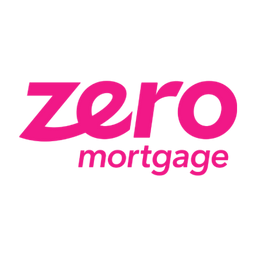You want to buy a home but don’t have a Social Security number. Unfortunately, it can be challenging to get approved with a traditional lender as most require your Social Security number to verify your identity, along with a host of other documents to approve you for a mortgage. Luckily, there are ITIN loans that cater to borrowers with IRS-issued Individual Tax Identification Numbers (ITINs).
Read on to learn more ITINs, how ITIN loans work and how they can make homeownership accessible.
What is an ITIN?
An ITIN is a unique tax processing number issued by the IRS to any of the following individuals:
- Resident aliens required to file a federal income tax return
- Nonresident aliens required to file a federal income tax return
- Spouse or dependent of a resident alien
- Spouse or dependent of a nonresident alien
- Nonresident aliens that have a right to claim a tax treaty benefit
- Nonresident alien professor, student or researcher who plans to file a federal income tax return or claim an exception
(Quick note: Immigration status doesn’t affect the issuance of ITINs. So, you’ll be eligible for an ITIN if you’re a resident alien or nonresident alien if you’re obligated to file and pay taxes).
The primary purpose of an ITIN is to help taxpayers comply with federal regulations as they relate to U.S. tax laws. It also makes processing tax returns and accompanying payments possible by the IRS for individuals who do not have a Social Security number.
However, you can use it as a form of identification with select mortgage lenders if you don’t have or are not eligible to get a Social Security number.
ITIN loans are categorized as full doc, non-QM mortgages. So, you’ll have to provide the lender with the identifying information and financial documentation to get a lending decision.
How to Receive an ITIN
If you’re eligible for an ITIN, there are three options available to submit a request.
Option 1: Mail
Here’s how to apply for an ITIN by mail:
- Complete Form W-7 (Application for IRS Individual Taxpayer Identification Number).
- Gather your foreign status documents, proof of identity and tax return.
- Mail the completed package to:
- Internal Revenue Service
- Austin Service Center
- ITIN Operation
- P.O. Box 149342
- Austin, TX 78714-9342
- The IRS will return your documents by mail within 14 weeks. You can also include a prepaid Express Mail return envelope if you wish to receive your documents sooner.
Option 2: In-Person
You can also apply for an ITIN through an IRS-authorized Certifying Acceptance Agent. Refer to IRS.gov for a list of options.
Option 3: By Appointment
Contact the IRS Taxpayer Assistance Center in your local area and request an appointment to get an ITIN. An agent will submit your request, and you’ll receive an ITIN by mail once the processing of your application is complete.
Important Considerations
It can take up to seven weeks to receive your ITIN in the mail from the IRS. So, you should apply before you have to file and pay taxes (if applicable). You also have the option to attach the completed Form W-7 to your federal income tax return when you file.
Can You Get a Loan with an ITIN?
Yes, it’s possible to get a home loan with an ITIN number. You’ll have to do some legwork, though, to find a reputable lender to assist you with your ITIN home loan needs. Traditional lenders generally don’t provide these loans because their offerings require a Social Security number to get approved. Still, it’s possible to secure a mortgage with terms that work for you.
How Do ITIN Loans Work?
ITIN loans are mortgage products designed to help foreign nationals without a Social Security number purchase a home. These loans can also be used to refinance an existing mortgage.
Each lender has different eligibility requirements, but most will consider the following:
- Identifying information: You’ll need a copy of your ITIN card, government-issued photo identification card (i.e., driver’s license), passport and a valid U.S. Visa.
- Credit profile: Lenders will evaluate your credit history to determine if you’re eligible for a loan. A borrower with good or excellent credit is preferred, but you may be eligible if your credit score is lower if there are other compensating factors, like a low debt-to-income ratio.
- Proof of income and employment: Most lenders require two or more years of steady, verifiable income and employment to approve you for an ITIN mortgage. Self-employed borrowers are also welcome to apply.
- Proof of residency: Lenders will also request proof of residency for the past two years.
You’ll also be asked to make a down payment of at least 15 percent in most cases.
Who Can Get ITIN Loans?
ITIN loans are ideal for prospective homebuyers without Social Security numbers. However, you should also meet the lender’s eligibility guidelines, which include a solid credit rating and consistent, verifiable income and employment. You should also be prepared to make a down payment of at least 15 percent (or higher in some instances).
Pros and Cons of ITIN Loans
As with all mortgage products, ITIN loans come with their share of benefits and drawbacks to consider before applying for financing.
Pros
- Accessibility: As mentioned above, most lenders will require a Social Security number to consider you for a mortgage. But an ITIN loan lets you bypass this requirement if you find a lender who accepts ITINs in lieu of Social Security numbers and that is willing to do business with you.
- Affordable loan payments: You can get a home loan that works like a traditional mortgage and lets you repay over an extended period of time. But with a hard money loan, which can be an alternative to an ITIN loan, you won’t have this luxury.
- Helps build credit: Mortgage lenders report payment history to the credit bureaus. As you make timely payments on your home loan over time, you’ll build positive credit history. Plus, your credit score could improve since payment history is the most significant component of the FICO credit-scoring model.
- Refinancing option: If you currently have a home loan and would like to refinance it to secure better terms or a more affordable monthly payment, you may be able to do so with an ITIN loan. In case you aren’t familiar with refinancing, it involves swapping out your existing loan for a new one, preferably with better terms or a longer loan term, to get a lower monthly mortgage payment. You can also convert a portion of your equity into cash through a cash-out refinance. To illustrate how this works, assume your mortgage balance is $350,000, and you pull out $25,000 in home equity. You’d get the $25,000 in cash to use however you see fit and a new loan for $375,000 ($350,000 + $25,000).
- Streamlined application process: You’ll generally find that you can apply for an ITIN loan online with most lenders. Even better, you may be able to upload the supporting documentation directly to the online dashboard and monitor the application status.
Cons
- Limited availability: ITIN loans aren’t readily available through traditional banks, credit unions and online lenders. You’ll have to do some legwork to find a lender who can assist you with your mortgage needs.
- Processing timeline: If you want to buy a home soon but haven’t yet applied for an ITIN, you may have to hold off on applying. The IRS could take up to seven weeks to process your application and send your ITIN in the mail.
- Steep down payment requirement: The minimum down payment requirement of 15 percent for most ITIN loans could place a dent in your wallet.
- Hefty borrowing costs: These loan products also come with higher interest rates due to the risk they pose to the lender. And in the unlikely event that you leave the U.S. permanently or get deported, the lender will be on the hook with no way to collect what’s owed on the home loan.
How to Apply for an ITIN Loan
When you’re ready to apply for an ITIN loan, here’s how to move forward:
- Step 1: If you haven’t already done so, apply for your ITIN by mail, phone or through the IRS Taxpayer Assistance Center. Remember, it takes up to seven weeks to receive it in the mail, so you want to apply sooner than later.
- Step 2: Research lenders to identify those offering ITIN loans.
- Step 3: Narrow down your list of lenders and inquire with those at the top of your shortlist about eligibility guidelines.
- Step 4: Gather the documents the lender will need to make a lending decision.
- Step 5: Get preapproved for an ITIN loan. During this step, the lender will review your credit profile and the answers you provided to questions regarding your finances.
- Step 6: Start searching for a home that fits your needs and the shopping budget provided by the lender. Be sure to include the property taxes, homeowners insurance premiums and HOA or CDD fees in your calculation (if applicable).
- Step 7: Make an offer on the home you’re most interested in. You should also be prepared to make an earnest money deposit to show the seller you’re serious about purchasing the home.
- Step 8: Work with the lender to finalize your ITIN loan application. The underwriter may request additional documentation before issuing a final approval or clearing to close. Be sure to respond promptly to avoid hiccups or delays in the processing of your loan application.
- Step 9: Seal the deal at the closing table. The remaining portion of your closing costs and down payment will be due at this time.
Frequently Asked Questions (FAQs)
Below are some frequently asked questions regarding ITIN Loans.
It depends on the lender. That said, some do not require a U.S.-based credit score to qualify for a mortgage.
Yes. Some lenders may be willing to approve you for an ITIN Loan with little or no credit history.
Yes, self-employed borrowers can access ITIN Loans. However, you’ll likely need to provide bank statements in lieu of tax returns when applying for funding.
Some lenders allow borrowers to use monetary gifts from relatives and friends for a portion of the down payment. Check with the lender to confirm the maximum allowable percentage, as it varies.
Your FICO score, used by over 90 percent of lenders and creditors to make lending decisions, is made up of five components:
Payment history: 35 percent of your FICO score
Amounts owed: 30 percent of your FICO score
Length of credit history: 15 percent of your FICO score
Credit mix: 10 percent of your FICO score
New credit: 10 percent of your FICO score
Lenders report payment activity on ITIN Loans to the three major credit bureaus – Experian, TransUnion and Equifax. Since payment history is the most significant factor in your credit score, making timely mortgage payments each month will help build positive credit history over time. Plus, your credit score will likely improve, assuming you manage your other debt obligations responsibly. But if you fall behind on mortgage payments, your credit rating will be damaged.











